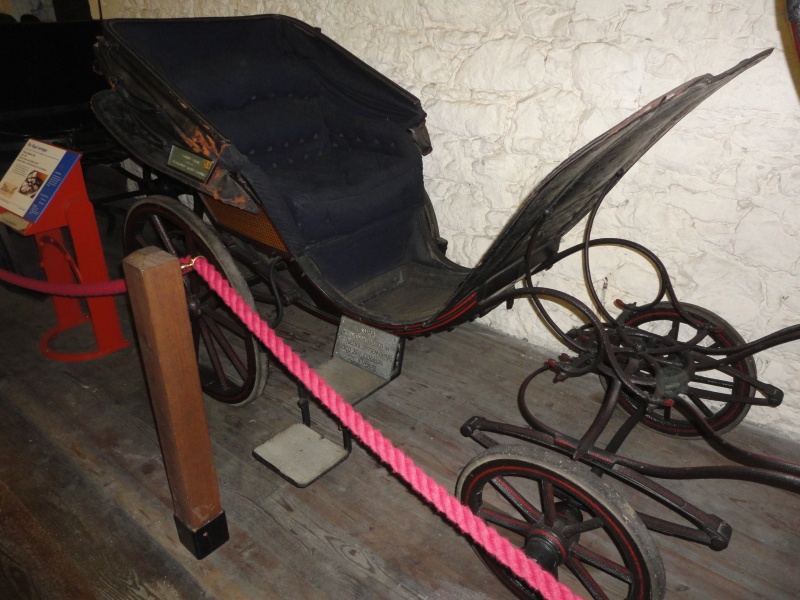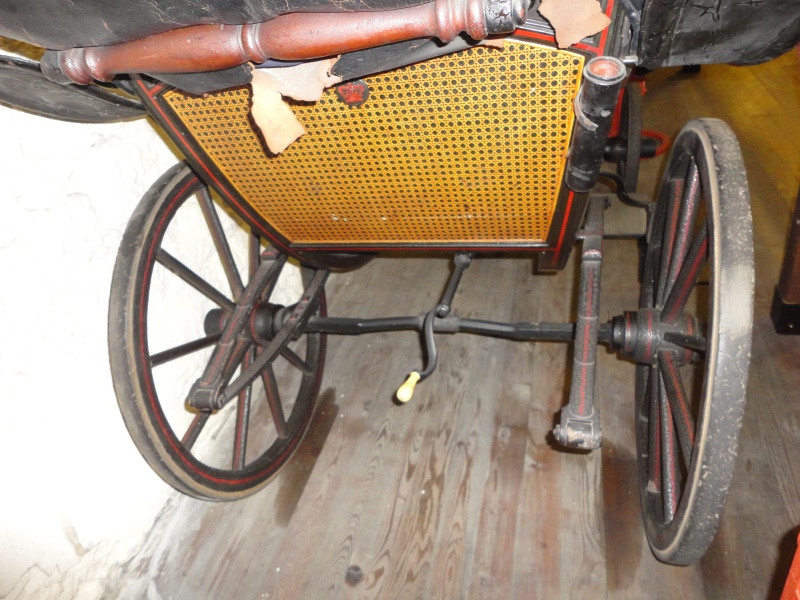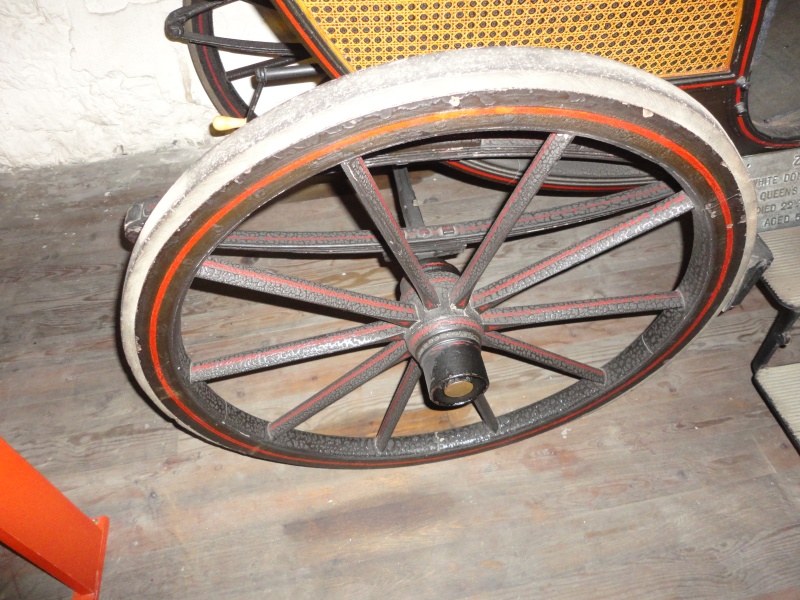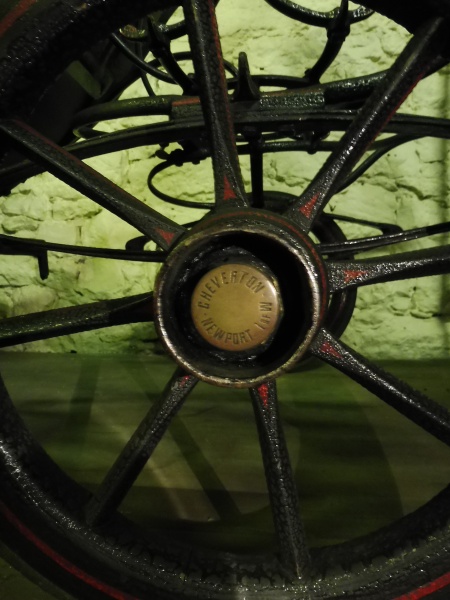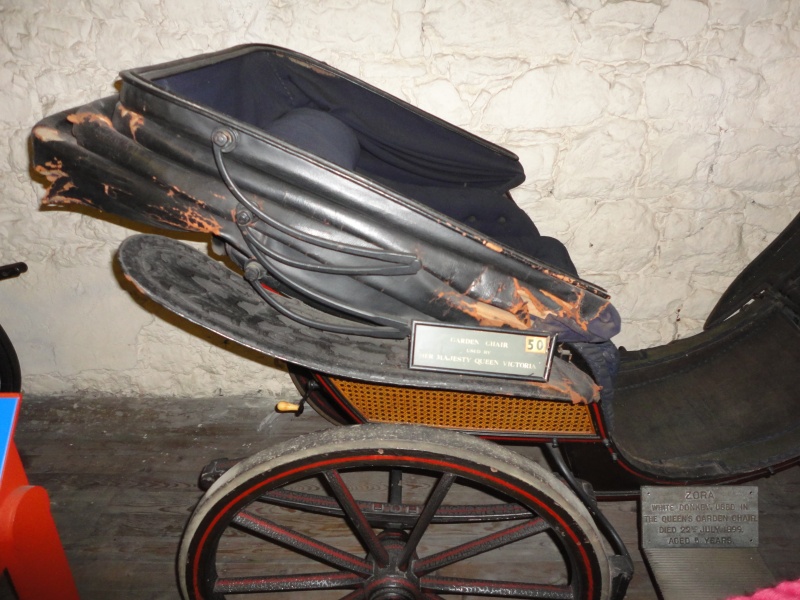Use the dots above to scroll through images.
Listed in 1 collection
Listed at 1 museum
Listed for 1 maker
Quick Details
Carriage Type
Pony Phaeton
Date of Production
circa 1870
Materials used
Paint, Wood, Iron, Leather, Wool Box Cloth, Bone, RubberSummary of Pony Phaeton
Pony Phaetons were driven by ladies around parks and estates. They are lightweight elegant little carriages for use in fine weather. Some would be fitted with a hood in case of a chilly breeze or strong sunlight. The Phaetons that were used by Queen Victoria had very large dash boards as she specifically stated that she did not wish to see the pony’s bottom.
There are a number of carriages in the Tyrwhitt-Drake Carriage Museum that belong to the Royal Collection. Three are Pony Phaetons that were used by Queen Victoria. This particular one was built by the Isle of Wights foremost coach builder, Cheverton. It was used at the former Royal residence Osbourne House pulled by a pony of donkey and led by John Brown.
Full description
Cheverton built a number of carriages for the Royal Household for use at Osbourne House. There are several Pony Phaetons by them with Royal connections one is at the National Trusts Arlington Court Carriage Museum. This example is delicate and fine and designed to seat a single person. It was used by Queen Victoria and pulled along by a donkey or pony that was led by an attendant.
The seat is fairly shallow and cut under with the side and back panels covered in sham cane work. A leather head is fitted to the seat. This is in a rather poor condition with the folds and corners having disintergrated and tears here and there. The head is lined with blue wool cloth with the same cloth covering the seat back, sides, cushion and seat drop. Above the wheels bolted to the side panels are leather splash guards. At the back of the carriage is a leather whip holder (a little strange as it is obscured by the leather hood) and a winding leaver with a bone handle for the brake that operates on the rear wheels. There is also a turned wood handle across the back signifying that this Phaeton could be pushed along by hand and used as an invalid carriage without the use of a pony. Folding steps are on each side to allow very easy access to the carriage.
To the front is a huge leather dash board, curved at the corners and with an indentation on the top edge. It is supported on very elegant iron brackets to the fore carriage which complement the beautiful, stylish dumb irons. The independent shafts have leather serving at the ends and at the point of the breeching staples.
This Pony Phaeton is sprung on elliptic springs at the front and back. The carriage has English pattern wheels with 8 spokes at the front and 10 at the back and iron tyres. The axles are collinge patent, compassed up slightly at the back and straight to the front.
The livery colours of the Royal household is dark burgundy with red lining. Over the years the paintwork on this carriage has discoloured and it now appears black with red lining. On the back panel is a small round applied badge with a crown.
.
Inscriptions
On the axle caps: CHEVERTON NEWPORT I of W
Condition report
The leather head is in poor condition with tears and fragile areas around the folds, great care should be taken when lifting it. The wool cloth upholstery is in good condition but would benefit from a clean. The paintwork has discoloured over time as one would expect, it is a little fragmentary on the wheels. On the shafts the leather serving has bubbled.
Access information
This Pony Phaeton is in the care of the Tyrwhitt-Drake Carriage Museum
Maidstone Museum and Art Gallery
St Faith's Street,
Maidstone
ME14 1LH
Picture credit
Maidstone Museum and Bentliff Art Gallery / Amy Bracey / Robert Lovell

 Carriage Foundation
Carriage Foundation